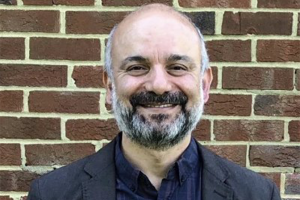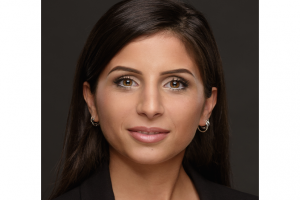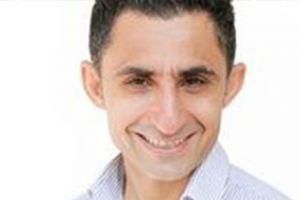Tuesday, 4 May 2021
6:00PM – 7:30PM BST
Online meeting: ‘Unpacking the recent political developments in Rojhelat (Iranian Kurdistan)’
Speakers – Dr Kamran Matin and Dr Allan Hassaniyan, moderator of the event – Dastan Jasim.
This online meeting on the political developments in Rojhelat or Iranian Kurdistan hosted two academic speakers: Dr Kamran Matin, a Senior Lecturer in International Relations at Sussex University, UK; and Dr Allan Hassaniyan, Lecturer in Middle East Politics, focusing on contemporary Iranian and Kurdish political and societal development at University of Exeter, UK. The meeting was moderated by Dastan Jasim, a Research Fellow at the GIGA Institute for Middle East Studies, Germany, and a doctoral student at the Friedrich-Alexander University Erlangen-Nuremberg, Germany.
Although the Kurdish movement in Iran has a venerable history, the brutal state repression during the early 1980s delivered a significant blow that left the movement fragmented. The subsequent efforts by the Kurdish political parties to regroup and build a presence in Iraqi Kurdistan and the diaspora in Europe has succeeded to a certain extent, but their efforts to re-establish themselves in Rojhelat have faced many barriers. In the past decade, there were manifestations of widespread Kurdish opposition to the Islamic regime and instances of mass protests. Also, there has been an increase in Kurdish cultural activities in Iran during the past two decades. The meeting focused on highlighting the factors that have been affecting the political and social developments in Rojhelat. The international coverage of the situation in Rojhelat and some of the recent political events and processes were also covered. It sought to elucidate the domestic and regional factors and developments that have been influencing Kurdish politics in Rojhelat.
Jasim introduced the two speakers and listed some of their contributions to the study of Kurdish politics and Middle East Politics. As an introduction, she asked Dr Hassaniyan about the lack of knowledge and attention to the situation of the Kurds in Rojhelat, why does the oppression and racism that the Kurds suffer is met with silence, how did that situation develop historically, and how can we characterise it?
Dr Hassanian highlighted the approach the Iranian state has taken to Rojhelat historically as the main factor. During the second Pahlavi era in Iran, which started in 1941, the Kurds in Iran were referred to as ‘Aryan brothers’. This concept has been carried on by different governments subsequently. They refer to the Kurds as the most ancient people of Iran; the Kurds are seen as part of Iran, and this argument is used to refuse their demands for autonomy. In Iran, there is the persecution of the Kurds, execution of Kurdish political activists, repression of civil society activists etc., but they are not covered much. The regime attack Kurdish identity, Iranian media, cinema and cultural activities have become a platform to attack Kurdish identity and culture and to humiliate and belittle them. Why are Kurds targeted more than any other nations in Iran? The Kurds have been politicised and have resisted assimilation by the regime. A more subtle form of racism is being practised against the Kurds. Another reason why we cannot hear much about the situation in Rojhelat is because all aspects of Kurdish society have been securitised and studying what goes on in the area or researching the situation is very difficult. As a result, the society in Rojhelat has become mysterious and unknown to the outsiders. There is a province called Kurdistan, and this can be mistaken for recognition of Kurdish identity. Even Kurds from other parts might think that there is a level of recognition of Kurdish identity. Repression has been happening to the Kurds in Rojhelat and the regime has dealt with the Kurds and Kurdish movement in a more sophisticated way.
Jasim asked a question about class in Rojhelat to Dr Matin: What role do class play for Iran and the Kurdish population?
Before answering this question, Dr Matin commented on the previous question and said there are internal and external factors behind why we hear less about Rojhelat. First, the ratio of the Kurdish population to the overall population of Iran is much smaller, which means they have fewer resources for making themselves heard. How Iranian nationalism has been constructed since the beginning of the last century is also a factor. The Iranian nation is not defined ethnically but culturally. Subtly, Iranian nationalism recognises the diversity within it but organises them hierarchically. This is known as ‘exclusion through inclusion’ in the academic literature. The way outsiders, particularly the leftists, see the Iranian state is the external factor behind the lack of interest in Rojhelat. Iran is misperceived as a progressive state because it is at the receiving end of American actions.
Concerning the role of class, Dr Matin said that we need to situate the question in the political economy of modern Iran. That political economy of Iran has to do with how the nation-state is constructed in Iran in the early 20th century. Also, Iran is an oil rentier state, and rentier states are more centralised usually. It has a bourgeoisie tied to the state; the wealth that exists is mainly due to the sale of oil, which goes to the state. It is then distributed to different social classes in Iran according to its political considerations. It is not distributed to the Kurds because the Kurds are not represented at the state level. The formation of a Kurdish bourgeoisie, which will have relative power, would be prevented because the Kurds cannot be collectively represented at the state level. There are also dynamic developmental reasons: the border regions such as Kurdistan were much less developed. The Kurdish areas were economically underdeveloped at the start. The investment in the Kurdish region was also uneven, and the uneven investment and inequality were reproduced over time and in higher levels. Inequality has been exacerbated because of the securitisation of Kurdistan as a consequence of Kurdish people resisting their subordination to the Persian state. Dr Matin drew attention to the exclusion of many Kurds in the public sector employment after the 1979 revolution because they were considered a potentially dangerous element by the state. He said that the Kurdish bourgeoisie in Iran collaborates with the regime and are happy with a lower-level political representation as long as its economic interests are advanced. The question of kolbars (couriers) killed by the Iranian security forces on almost a daily basis is also relevant here. The items the kolbars transfer are bought from local Kurdish bourgeoisie from both sides of the Iraq and Iran border; it is the bourgeoisie that makes a huge profit from this trade. Hence, the question of class is a complex one. It is directly inter-related to the question of nation and ethnicity. It is also implicated in the broader geopolitics of the region. In terms of the developmental level of the region, Kurdistan is one of the least developed regions in Iran.
Jasim asked about the Sunni-Shia split in the Kurdish population in Iran and referred to an academic article that showed Kurds who joined the PJAK (Party of Free Life in Kurdistan) are from a Sunni background. She asked both speakers what does the Sunni-Shia divide means in the internal division of the political parties.
Dr Matin emphasised Shi’ism’s centrality to Iranian nationalism from the start, and both the monarchy and the Islamic republic tried to cultivate that dimension. Kurdish nationalism and Kurdish identity have been able to articulate itself, thanks to advancements in modern media and technology, the Kurdish question has become more internationalised, and its impact in the region increased. As a result of this, the Shia Kurds have become more aware of their Kurdish identity. The more the Iranian state leans on the Persian side of Iranian nationalism, the less Shi’ism becomes an effective means by which the Kurds are incorporated into the political power. Despite its appearance, in the past 15-20 years, Iranian nationalism has become more secular than before the revolution because it relies on the Persian centre of Iranian identity instead of Shia.
Dr Hassaniyan broadly concurred with Dr Matin’s perspective and drew attention to the emergence of the Safavid Empire in the 16th century and their focus on using Shi’ism as their state ideology. Kurds were in the buffer zone between the Safavid and Ottoman empires, and Shi’ism has become an element they could use to control that territory. After the 1979 revolution, the Islamic republic used Shi’ism quite systematically and in a sophisticated way relied on Sunni-Shia divisions. However, it cannot be compared to the Sunni-Shia divisions elsewhere because there is no conflict between the Sunni and Shia Kurds. The state has been relying on it to divide the Kurds throughout the past 40 years. The non-Sunni groups in Kurdish society feel excluded, and this feeling has been manipulated by the occupiers of Kurdistan, not just in Iran but also in other parts. Generally speaking, Kurdish nationalism has not appealed to the Shia Kurds in Iran. However, from 2015 onwards, we have seen the rise of Kurdish nationalism in the Kermanshah-Ilam area, the area where the Shia Kurds live. There is also much solidarity and connections between the Sunni Kurds and Shia Kurds, particularly in the aftermath of the earthquake in 2017.
The event continued with further questions from Jasim and the audience on different aspects of Kurdish politics and society in Rojhelat.
Speakers’ biographies

Dr Kamran Matin is a senior lecturer in International Relations at Sussex University, UK, where he teaches international history, international theory, and Middle East politics. He is the author of Recasting Iranian Modernity: International Relations and Social Change (Routledge, 2013) and co-editor of Historical Sociology and World History: Uneven and Combined Development over the Longue Durée (Rowman & Littlefield International, 2016), and several articles and op-eds on Kurdish politics. He is currently working on a manuscript provisionally entitled Between Class and Nation: Kurdish Communism in the Revolutionary Iran, 1968-1991. Kamran is also the co-editor of Palgrave’s Minorities in West Asia and North Africa (MWANA) series.
Dr Allan Hassaniyan – Lecturer in Middle East Politics, focusing on contemporary Iranian and Kurdish political and societal development at University of Exeter, UK. He obtained his PhD in Kurdish Studies from the Centre for Kurdish Studies at the University of Exeter. In his doctoral research, he examined the 20th-century’s Cross-border Iranian-Iraqi Kurdish Movements’ Interaction and effects of this interaction of the Mobilisation of the Iranian Kurdish Movement. Before his lectureship, he completed a year of postdoctoral research at the centre for Kurdish Studies at the University of Exeter, during which he researched and published on the securitisation of the Iranian Kurdistan and insurgency and popular uprising in Rojhelat / Iranian Kurdistan.

Dastan Jasim is a Research Fellow at the GIGA Institute for Middle East Studies, a doctoral student at the Friedrich-Alexander University Erlangen-Nuremberg, and a member of the GIGA Doctoral Programme. Her research focuses on the civic culture of Kurds in Iraq, Iran, Syria, and Turkey, as well as on security developments in the Kurdish regions.”


